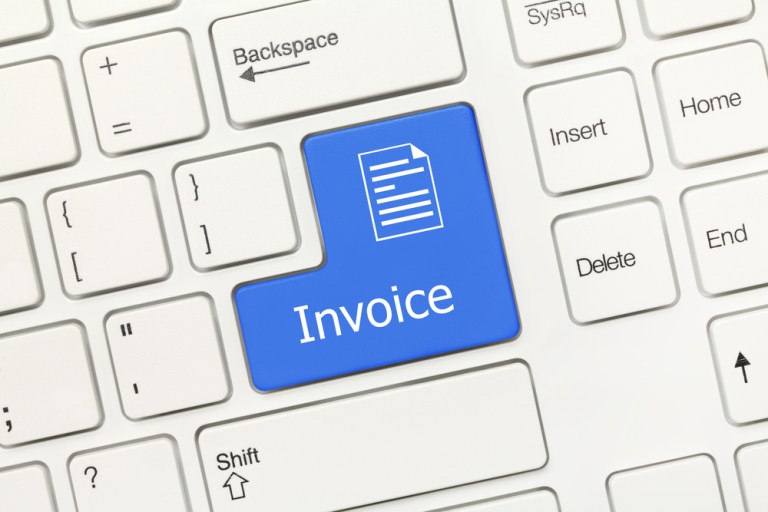Why eInvoice Adoption Won’t Guarantee ePayments Adoption

The B2B finance industry is well-versed by now in the unfortunate popularity of paper invoicing. But analysts have uncovered an array of reasons why companies should adopt eBilling — perhaps most important of all being the impact on the bottom line that such a shift would have.
Take, for instance, the cost of a postage stamp. Last month reports surfaced that the United States Postal Service wants to increase the cost of a stamp by a penny or more. Sure, mere pennies don’t make much of a difference to a CFO. But they add up, says Shan Haq, vice president of Corporate Strategy and Development at eInvoice company Transcepta — and that should boost eInvoice adoption.
“Take an industry like wholesale distribution. They send more invoices than other industries, so even a relatively small company, or a mid-sized company, might send 50,000 invoices a month,” he recently told PYMNTS. Depending on how that company strategizes its billing, hiring people to generate and send out those invoices, plus the cost of actually mailing them, means a single invoice can cost a dollar for a supplier. “That’s $50,000 a month they don’t really need to be spending,” he added.
For a buy-side organization to process the paper invoice, the costs are even higher. Studies have estimated the price of processing a paper invoice to be as high as $33 for a single document, which is a major factor behind corporate buyers’ calls to receive an electronic invoice.
But, Haq explained, it’s not so simple for a supplier to oblige, especially the smaller ones.
“A supplier can email a PDF right out of their billing system in most cases, even a small business running Quickbooks,” he explained. “But the customer gains no benefit from that.”
That’s because for a commercial invoice to be a truly electronic one, it must be sent in a file that supports the capture of the data that’s in it, like an XML file. For many small suppliers, there is too much friction associated with integrating some type of technology or a professional necessary to have the capabilities to send electronic invoices.”
“If I ask my supplier to send me an XML invoice, it’s really only the largest, most sophisticated suppliers that can send that,” Haq said. “A smaller supplier can too, but they have to justify the cost to be able to do that.”
The burden associated with that process is why many eBilling companies haven’t been able to gain the adoption rates that corporate buyers would like to see, he added. There are the large organizations that can handle sending eInvoices as an XML or other file type to support clients’ needs, and there are smaller suppliers that can access third-party portals to generate electronic invoices by keying in data to an online system.
“But there’s a huge gap in the middle,” Haq said, and that middle has too many invoices to manually key in data to some online eInvoicing system. “That’s why they continue to use paper.”
Transcepta attacks this issue by integrating technological capabilities to turn a PDF file into an XML one, for example.
Getting over that reluctance to commit to electronic invoices is only part of the battle for a digital connection between buyers and suppliers. And while Haq said corporate buyers are yearning for that digital connection, he said in his experience at Transcepta, there actually doesn’t seem to be a link between companies that want to receive invoices electronically and those that want to settle those invoices with electronic payments.
“I’ve been with Transcepta for 10-plus years, and it seems intuitive that there would be a link between electronic invoices and electronic payments,” he said. “But we just don’t see it. It’s odd, but it’s rare that a corporate customer will say, ‘I want to move to electronic invoicing and electronic payments.’”
Instead, over the years, he’s seen efforts to adopt eInvoicing coupled with other things, like adoption of other electronic documents such as purchase orders, or of dynamic discounting programs.
He has noticed, however, that suppliers are more apt to accept ACH payments instead of other electronic online payment methods like purchasing cards (p-cards), because they don’t want to accept the costs associated with those rails. His observations, though, may mean B2B FinTechs need to approach the issue of digitization in more targeted ways, without assuming that if a company goes digital in one area like eInvoicing, that won’t necessarily mean they’ll do the same in other areas, like electronic payment acceptance. Indeed, paper checks remain commonplace in supplier payments, with recent analysis finding that 44 percent of suppliers said they have received a paper check from corporate buyers. Some of those buyers may be the same ones demanding electronic invoices.
“The evolution of eInvoicing has included different things it’s been coupled with,” Haq said, “but it’s rarely payments — at least from what I’ve seen.”

